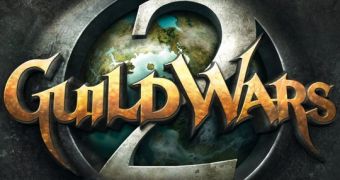The new Guild Wars 2 trailer has captured a lot of attention, and the sequel to one of the top-rated massively multiplayer online role-playing games has players everywhere looking for more details on the upcoming release. One site that managed to get hold of some of the game's developing staff is mmorpg.com and, in an exclusive interview, Guild Wars 2 Lead Designer Eric Flannum and Ree Soesbee, the world designer and writer for the title, revealed several new things about the gameplay and overall experience.
The first Guild Wars tried its best to incorporate a story-driven character progression, and GW2 will walk down the same path. “Guild Wars was built on a foundation of storytelling,” Soesbee said, “and we plan to continue that through GW2, expanding the experience beyond anything that's ever been done before. Individualized quests, events that alter according to player interaction, and personalized character history are only a few of the many ways in which we encourage the players to make their story personal and unique.”
Graphics were also greatly improved, as well as the overall visual diversity of the characters. “The biggest differences include a fully persistent world, fully 3D engine, a less complex combat system with fewer overall skills, multiple playable races, and separate world servers. Each of these differences has an enormous impact on every decision we make from there.” Soesbee further added that, with an increase in playable races, a change had to be made in the armor system, at least as far as aesthetics were concerned.
“[...] We went to a much simpler armor system where professions use light, medium, or heavy armor. This has allowed us to provide each profession with a lot more diversity in what they can choose to wear. For example, in the past Rangers had to wear armor that tended to have a long coat and mask. They can still choose to wear an outfit that looks like that, but they now also have a much greater diversity of appearances to choose from.”
Gameplay mechanics were also elaborated by the title's lead designer, and one thing that was detailed was the instance system. NCSoft's game will provide a more uninterrupted, persistent world with less instances, but even so, these will still play a very important role in it. “We use a lot less instancing than we have in the past,” Flannum said. “The game is structured much more like other MMOs, with the world consisting almost entirely of fully persistent areas. That being said, we have a number of different ways in which we use instancing.”
“Dungeons, for example, are instanced areas designed for group play. We also use instancing very heavily in the players' personal quest chain to reflect decisions that the player has made on those quests. For example, Logan Thackeray, captain of the Seraph, has an office located in Divinity's Reach; his office is instanced because we need to update his status based on choices the player has made.”

 14 DAY TRIAL //
14 DAY TRIAL //